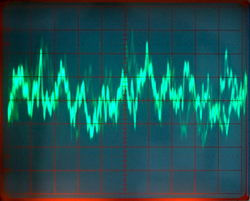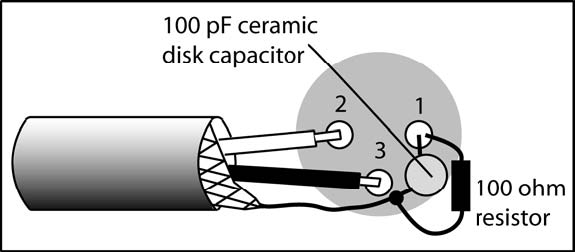
Other Tips
Even if your system is wired properly, hum or RFI may appear when you make a connection. Follow these tips to stop the problem:
• Unplug all equipment from each other. Start by listening just to the output of your studio monitors PA speakers. Connect a component to the system one at a time, and see when the hum starts.
• Remove audio cables from your devices and listen to each device by itself. It may be defective.
• Partly turn down the volume on the amps, and feed it a higher-level signal from your mixer (0 VU maximum).
• Do not wire XLR pin 1 to the connector-shell lug because the shell can cause a ground loop if it touches grounded metal. If you are sure that the shell won’t touch metal, wire XLR pin 1 to the shell lug to prevent RFI.
• Try another mic. Some dynamic mics have hum-bucking windings.
• If you hear hum or buzz from an electric guitar, have the player move to a different location or aim in a different direction. Magnetic hum fields are directional, and moving or rotating the guitar pickup can reduce the coupling to those fields.
• If the hum is coming from a direct box, flip its ground-lift switch.
• Turn down the high-frequency EQ on a buzzing bass guitar signal.
• If you think that a specific cable is picking up RFI, wrap the cable several times around an RFI choke (available at Radio Shack or other electronics supply houses). Put the choke near the device that is receiving audio.
• Install high-quality RFI filters in the AC power outlets. The cheap types available from local electronics shops are generally ineffective.
• Connect cable shields directly to the equipment chassis instead of to XLR pin 1, or in addition to pin 1. Some equipment is designed this way to prevent the “pin 1 problem”. The cable shield should be grounded directly to the chassis – – not connected instead to a ground terminal on a circuit board inside the chassis.
• Periodically clean connector contacts with Caig Labs DeoxIT, or at least unplug and plug them in several times.
By following all these tips, you can greatly reduce the likelihood of hum and RFI in your audio system. Good luck!
AES and SynAudCon member Bruce Bartlett is a recording engineer, microphone engineer and audio journalist. His latest books are Practical Recording Techniques (5th Ed.) and Recording Music On Location.

